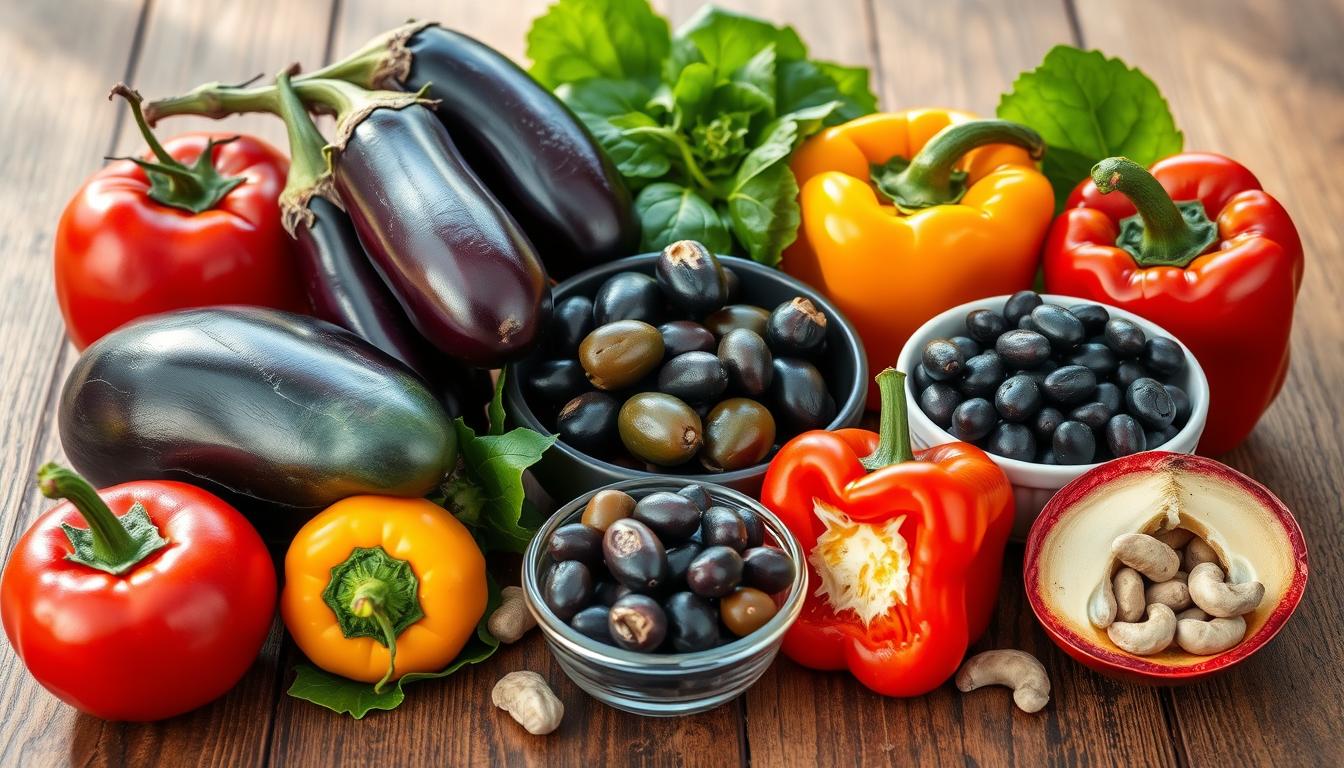Ever thought about the history of foods we eat every day? Many foods we love today were once thought to be deadly. Tomatoes and potatoes are great examples of how “toxic edibles” became our favorite dishes.
In ancient times, people were cautious about certain plants. They didn’t know about natural toxins. But, through trial and error, these foods became a big part of our meals.
Key Takeaways
- Many common foods were once believed to be poisonous, including tomatoes, potatoes, and eggplants.
- Natural toxins in foods can pose health risks, but modern processing techniques have made these foods safe for consumption.
- The transformation of “toxic edibles” into beloved culinary staples is a fascinating story of human ingenuity and adaptability.
- Understanding the history of these foods can provide valuable insights into the evolution of our food systems and the importance of food safety regulations.
- Continued research and monitoring by organizations like the Joint FAO/WHO Expert Committee on Food Additives (JECFA) help ensure the safety of natural toxins in our food supply.
The Transformation of Tomatoes
Tomatoes were once seen as dangerous, but now they’re a favorite in kitchens everywhere. They’re loved for their bright flavors and health perks. Their journey from being feared to being cherished is quite interesting.
Tomatoes are part of the Solanaceae family, which includes plants with toxins. These toxins come out when plants are stressed, like when they’re bruised or attacked by pests. The leaves and stems of tomato plants were thought to be poisonous, causing stomach issues and anxiety.
But, tomatoes are mostly water, with a small amount of fiber and carbs. This makes them safe to eat when they’re ripe. One medium tomato is packed with vitamins and minerals, like vitamin C, potassium, and Vitamin K1.
In the 1830s, tomatoes started getting more love in recipes and articles. Doctors like John Cook Bennett said they could help with health problems. This was the start of tomatoes becoming a popular food.
The Potato’s Poisonous Past
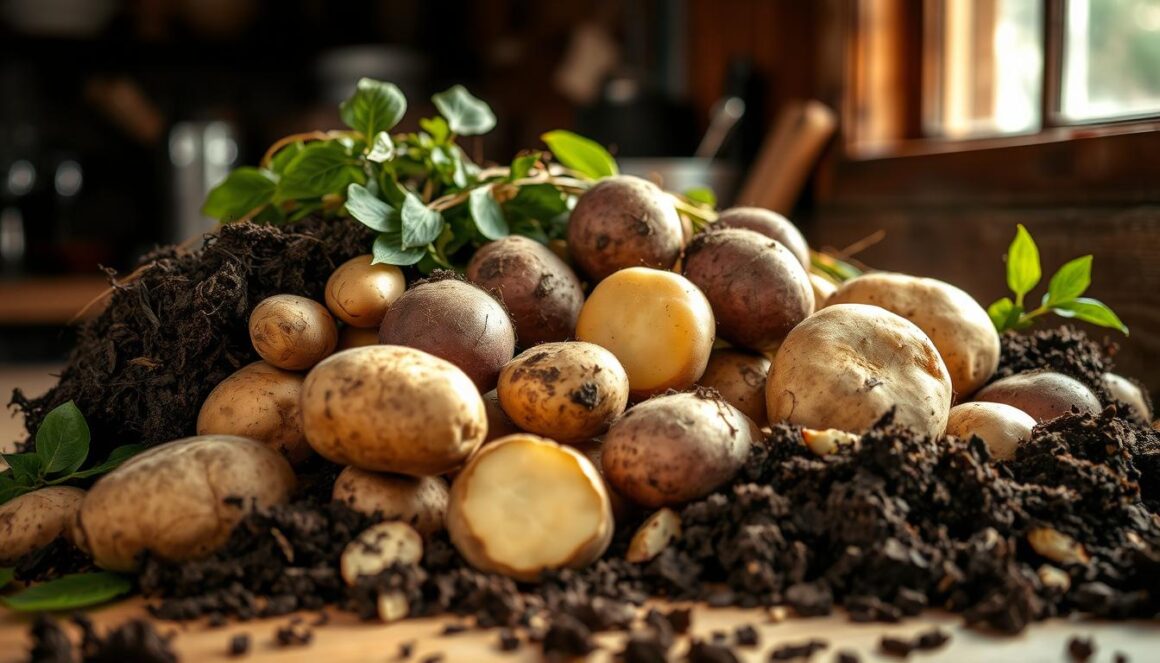
Potatoes are a common food, but they were once seen as dangerous. They belong to the nightshade family and have toxic substances like solanine and chaconine. These are found in the leaves, sprouts, and tubers.
It wasn’t until the 19th and 20th centuries that people realized how risky potatoes could be. In 1899, 56 German soldiers got sick from eating potatoes with solanine. In 1918, 61 people in Glasgow got very ill from eating potatoes with too much solanine, and one child died.
More tragedies followed, like in Germany in 1922 and during the Korean War in 1952. In 1983, 61 kids and staff in Alberta, Canada, got sick from eating green, bitter potatoes.
Today, we know how to grow and store potatoes safely. But, it’s still important to remember their dangerous history. Knowing this, we can enjoy potatoes more wisely and safely.
The Unexpected Story of Rhubarb
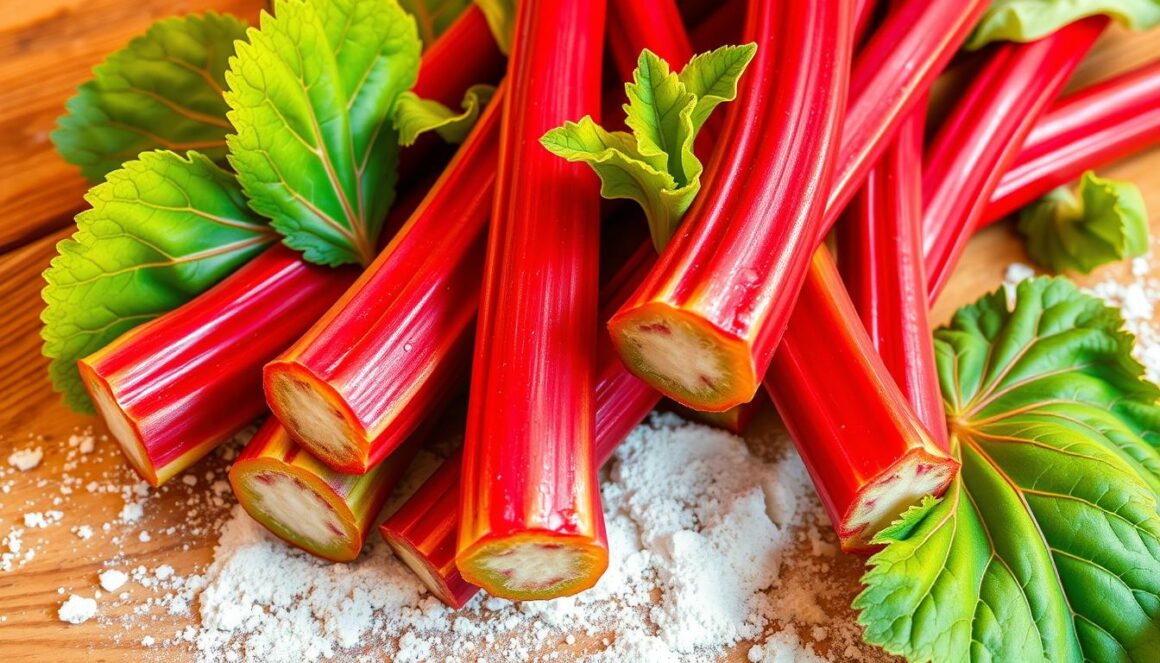
Rhubarb is often linked to sweet treats, but it has a surprising history. The stalks are safe to eat, but the leaves are toxic due to high oxalic acid levels. This has led to some dangerous food choices in the past.
People have grown rhubarb since 2,700 B.C. for its health benefits. In the early 1900s, soldiers were given rhubarb leaves, causing illness and even death. Yet, rhubarb has made a comeback, especially in the British Isles.
Rhubarb is technically a vegetable, but it’s often used in sweet dishes. It became popular in the U.S., especially in pioneer times. Today, it’s grown mainly in the Pacific Northwest and Michigan, where it loves the long summers.
Rhubarb’s popularity has changed over time, but it remains a nutritious choice. It’s packed with vitamin C, fiber, and potassium, but low in carbs. Its unique history and versatility make it a beloved part of our food culture.
The Historic Fear of Eggplant

Eggplants were once thought to be poisonous. They belong to the same family as tomatoes and potatoes. These plants have compounds called solanines and chaconine, but ripe eggplants are safe to eat.
In the Middle Ages, eggplants were feared and avoided. This fear was similar to the early views on tomatoes and potatoes. People thought they were poisonous because of their connection to nightshade plants. But as people learned more about eggplants, they discovered their nutritional value and versatility.
Now, eggplants are loved for their taste, color, and health benefits. They are full of vitamins, minerals, and antioxidants. They are used in many dishes, like baba ghanoush and ratatouille. Eggplants have gone from being feared to being a favorite food worldwide.
The Toxic Tale of Mushrooms
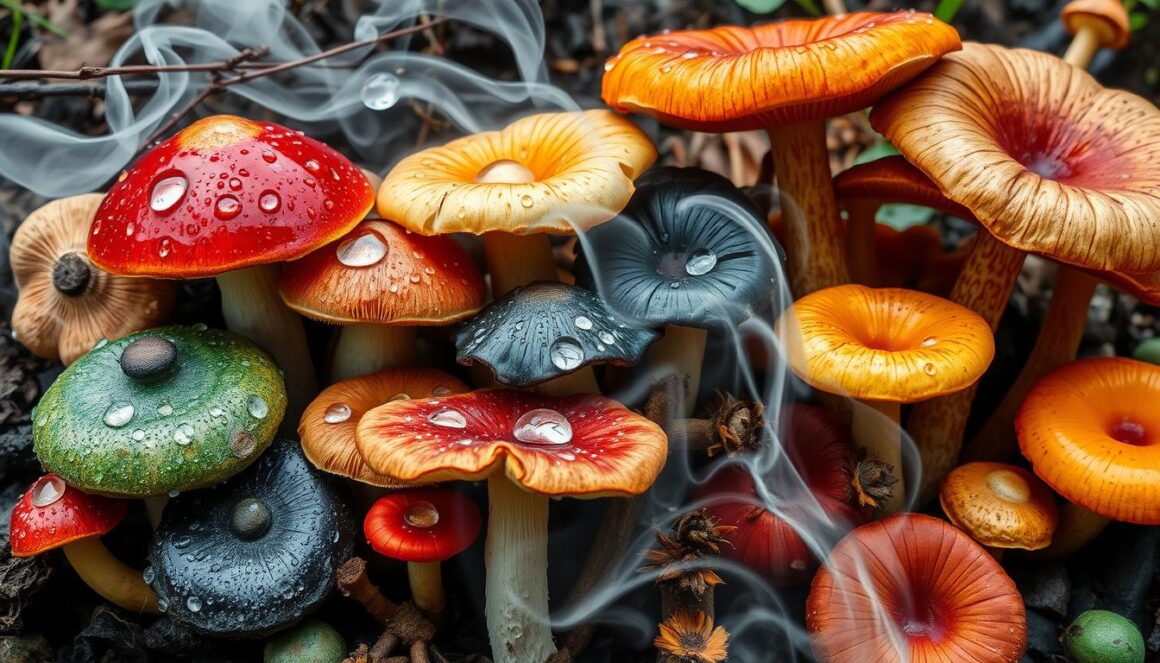
Some mushrooms are safe to eat, but others are deadly. The death cap and the destroying angel are two of the most dangerous. They can be found in the wild and are very harmful.
Eating these mushrooms can cause serious problems. You might feel sick, have liver failure, or even die. The death cap is especially deadly, killing over 50% of those who eat it. The destroying angel is also very dangerous, causing symptoms that can be fatal.
There are more mushrooms like these that can be deadly. Conocybe filaris, the webcap, and the autumn skullcap are examples. In one case, a family had to get kidney transplants because they ate mushrooms that looked safe but were not.
To stay safe, you must know for sure that a mushroom is safe to eat. The dangers of wild mushrooms remind us to be careful. Always get help from experts before trying new mushrooms.
Revealing the Secrets of Cashews
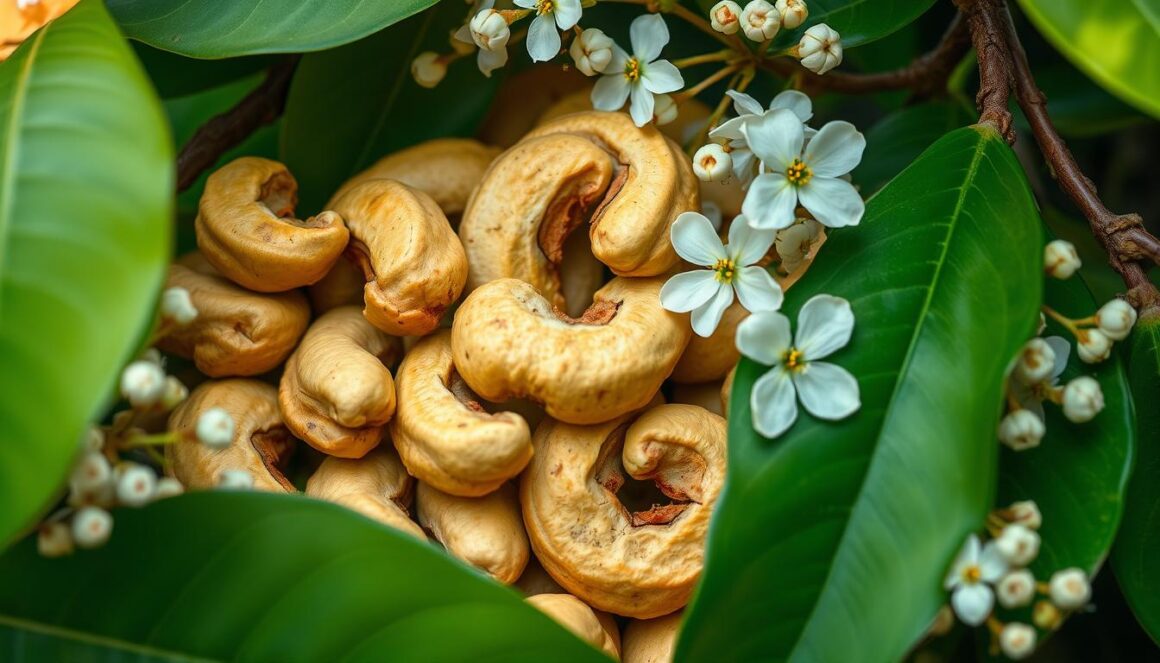
Cashews were once seen as maligned morsels and vilified vittles. But now, they are a favorite snack and ingredient. Their journey to being loved was filled with challenges.
Raw cashews have a compound called urushiol, like poison ivy. They must be steamed to remove this toxin. If not, they can cause severe allergic reactions, even in those without nut allergies.
The plant’s shell and leaves also have this toxin. But after steaming, cashews become a nutritional powerhouse. They are full of plant-based protein, healthy fats, and minerals.
Preparing cashews might seem hard, but it’s worth it. These maligned morsels are great in many dishes, from sauces to desserts. Now, more people enjoy the secret of these once vilified vittles.
The Hidden Dangers of Kidney Beans
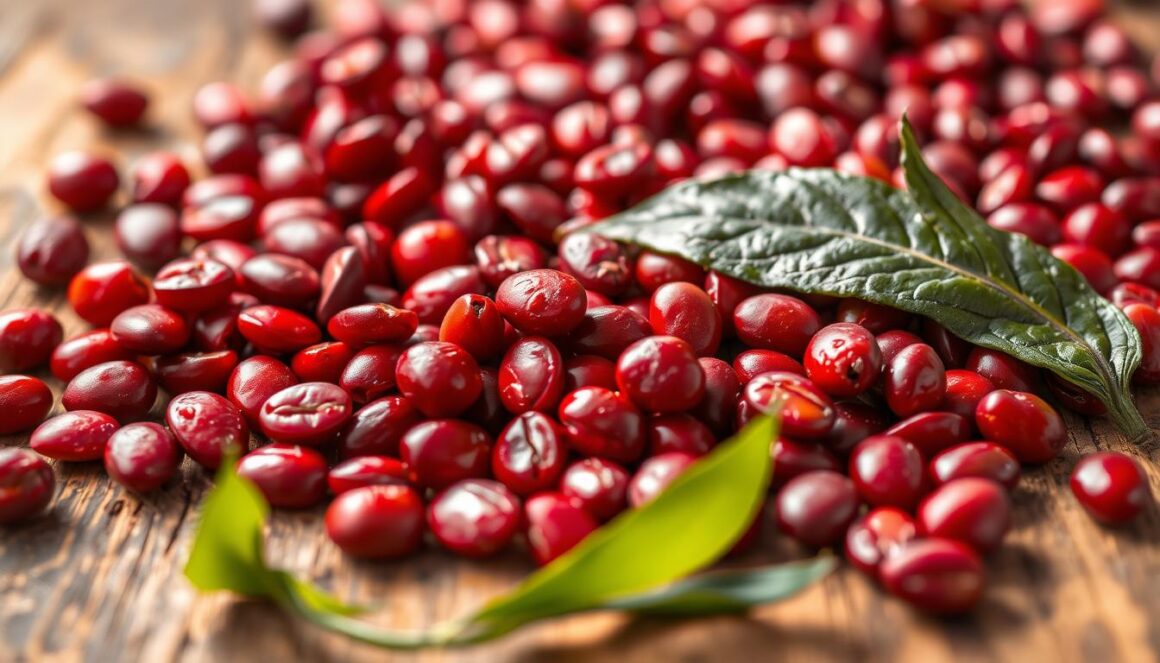
Kidney beans are often seen as safe and healthy. But, they can be dangerous if not cooked right. This is because of the toxins they contain.
Raw kidney beans have high levels of lectins, which are harmful. Eating just a few can cause stomach pain, vomiting, and diarrhea. This happens because the lectins stop the body from absorbing nutrients.
To make kidney beans safe, soak them for 12 hours. Then, boil them for at least 10 minutes. Canned kidney beans are already safe to eat.
This shows that even familiar foods can be risky. Knowing the dangers helps us enjoy kidney beans safely. We can then get their health benefits without worrying about our health.
Wrapping up
In this article, we’ve looked at seven foods once thought poisonous but now widely eaten. Tomatoes and rhubarb are great examples of this change. These foods have shown us how our views can change over time.
Even though these foods are now safe, we must still be careful. Eating foods that are bruised or moldy can be dangerous. Always check if foods smell or taste odd before eating them.
Understanding food safety is key. Our food comes into contact with over 14,000 chemicals, but only a few hundred are tested. This highlights the need for better food safety rules. By pushing for stronger regulations, we can enjoy our food safely and with confidence.

